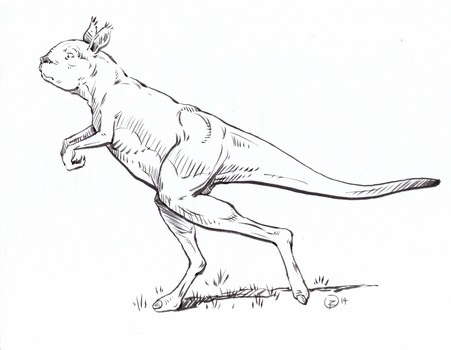Giant kangaroos from the Sthenurine group that lived in Australia about 100,000 years ago could not hop. A ten-year study of the anatomy and bone structure of all known ancient and modern species of kangaroo conducted by Christine M. Janis of Brown University has determined that giant kangaroos could not hop.
The largest of the Sthenurine kangaroos weighed about 550 pounds. Weight argues against hopping. Modern kangaroos have a flexible spine that allows the animals to hop when they want to move quickly and to use their tails and front feet for balance when they move slowly. The spines of Sthenurine kangaroos do not demonstrate the level of flexibility needed for hopping. The pelvis of the ancient animals also does not show the resiliency needed to maintain balance or shape during hopping. The ankles of Sthenurine kangaroos are too small to support hopping.
Sthenurine kangaroos were able to balance on one foot. The animals most likely walked on their hind feet during faster movement. The ancient kangaroos used their tail and front legs for balance during eating. The Sthenurine kangaroo’s teeth were adapted to browsing instead of grazing. Modern kangaroos prefer grazing.
The researchers attribute the extinction of the Sthenurine kangaroos to the lack of the ability to cover long distances by hopping. Climate changes and variations in food supplies may have forced the animals into oblivion about 30,000 years ago. This is the most extensive research into kangaroo evolution and anatomy that has ever been done. The researchers note that their study proves that assuming that ancient animals behaved like their modern counterparts is usually a false assumption.















